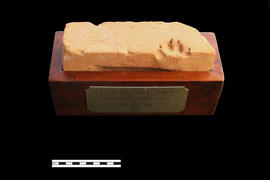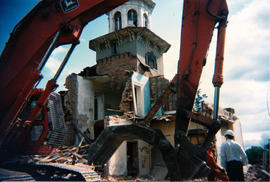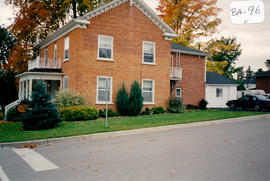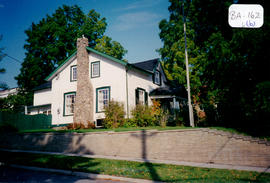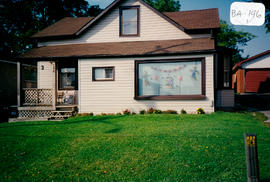Convent demolition to start this week
- CA BWGPL WEG-Arch-PH26598
- Item
- 1994
Parte de WEGWHIST Collection
"Demolition of the old convent on Barrie Street was scheduled to begin this week. The site, north of Frederick Street, will be the home of a new multi-service facility. When it's done in March 1995, it will be 15,000 square feet in size and will accommodate a child-care facility for 150 children. Bill Bowden, property manager for the Barrie and District Association for People with Special Needs and project manager for the new building, indicated the old convent has been totally trashed and nothing remains of any salvageable value. And as yet, there's no official name. "The Common Roof was the local name for the group attempting to get this project under way. It sort of stuck, I doubt if that will be the final, official name of the building," he said. Bowden said the new structure will house a number of agencies providing child-care services such as a daycare, a nursery, PALS resource centre and a number of other social service agencies for the child and family in the Bradford area. The new building will cost in the neighbourhood of $1.5 million. Bowden said the centre will "service in the neighborhood of 150 children each day. Children will be coming and going. Some will be there all day. Some will be there only in the morning and some only in the afternoon." The demolition work marks the end of a lengthy process. The Bradford West Gwillimbury Local History Association is working with the architect for the new building to include part of the old convent building in the new structure.
Sem título


